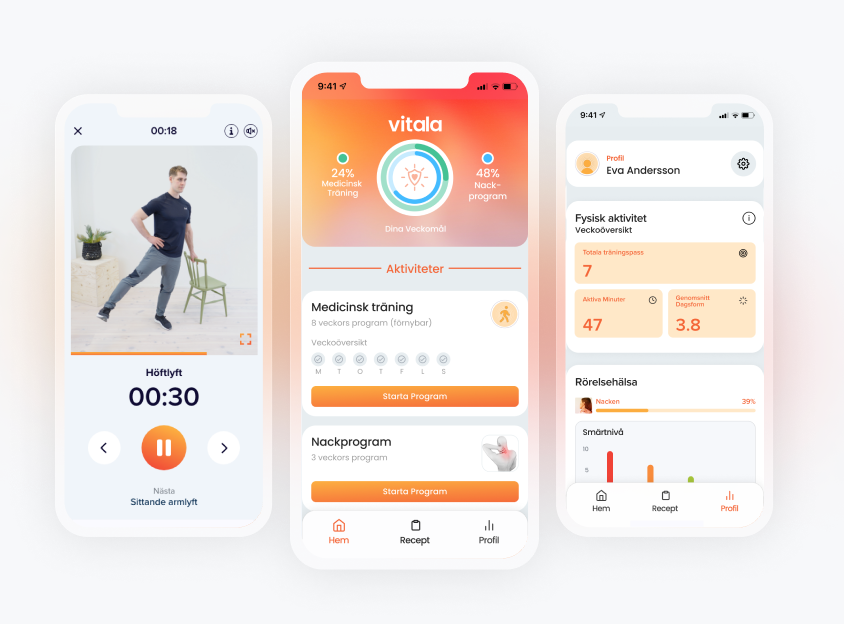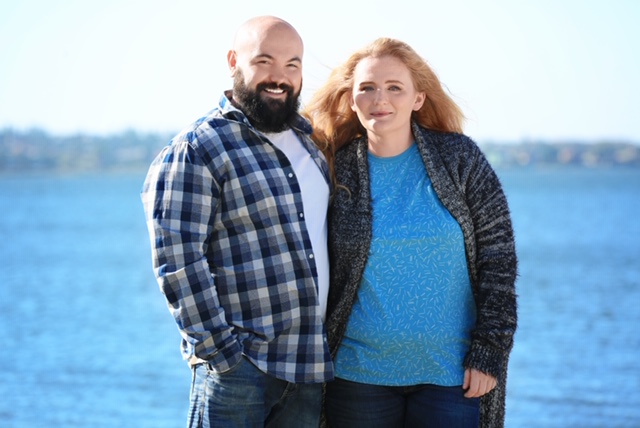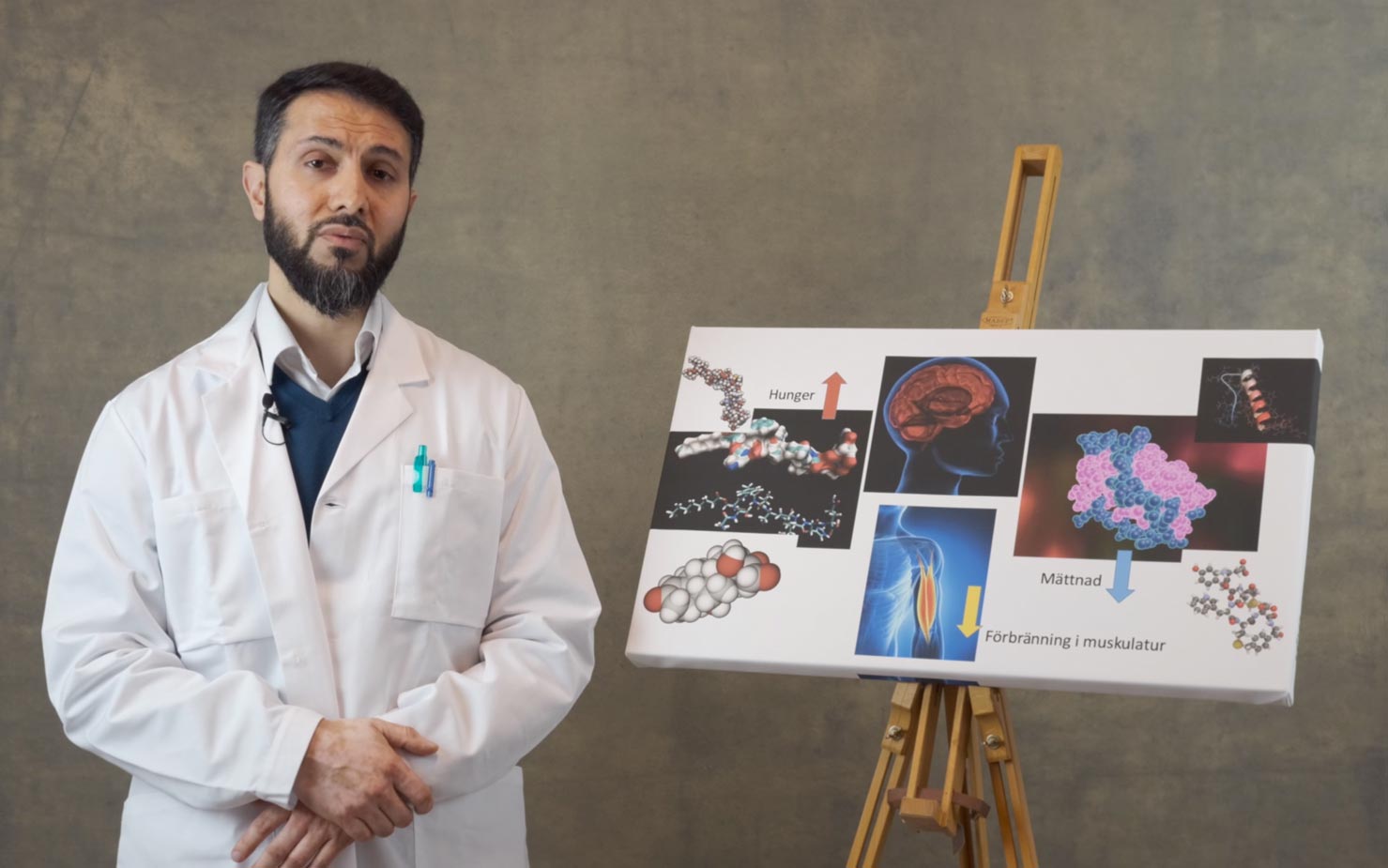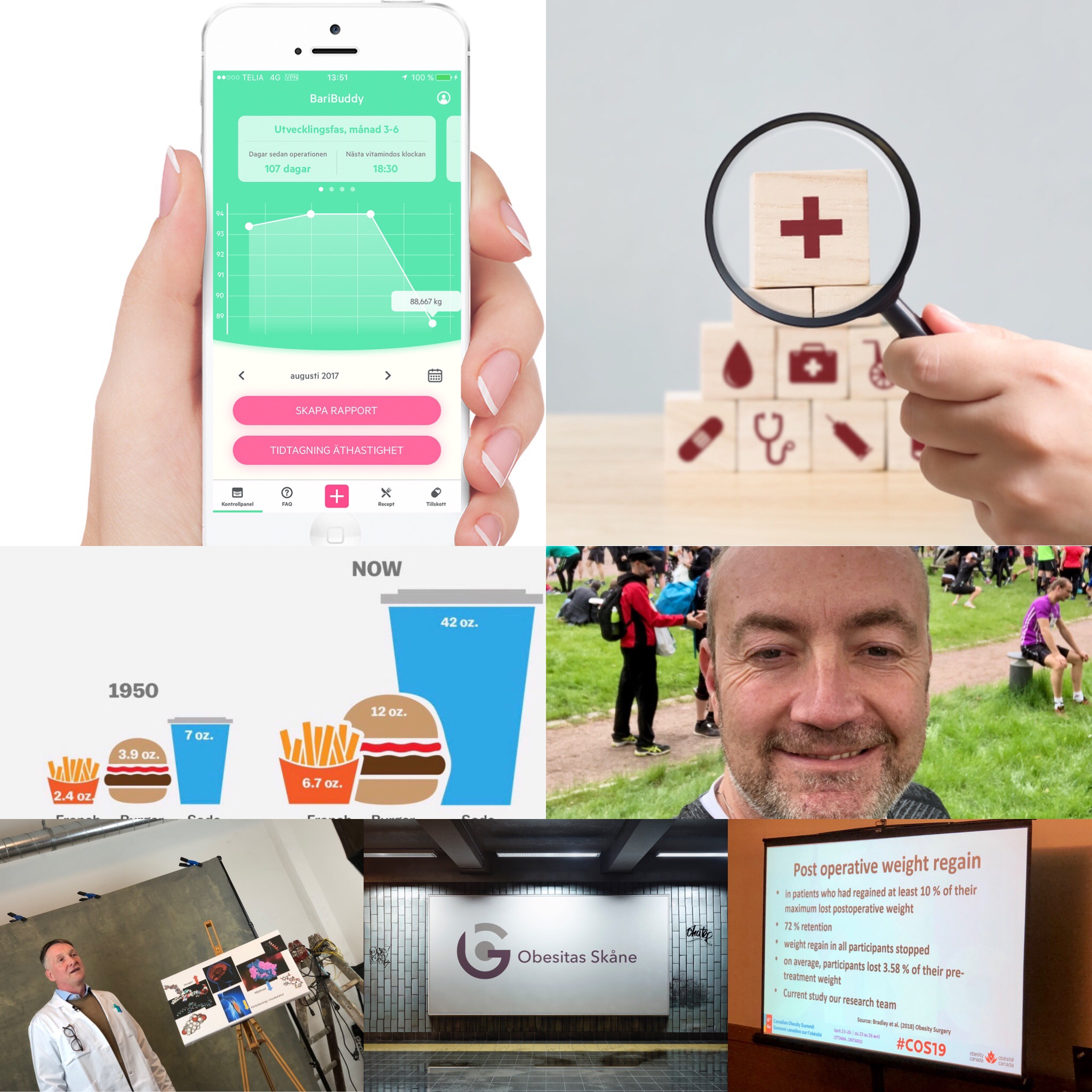
Vitala -träning efter din operation
Träning är alltid viktigt, oavsett om man gör det i samband med en fetmaoperation eller inte. Fysisk aktivitet har en positiv effekt på vår fysiska och psykiska hälsa. Det bidrar till ett ökat välbefinnande. Du som tränar sover bättre, blir starkare, gladare och ditt minne förbättras. Under svältfasen första året efter din operation är det betydelsefullt med fysisk belastning. Detta eftersom du då inte bara förbränner fett utan också muskulatur.
Om man är ovan, fortsatt har en stor kropp samt begränsas av värk eller andra sjukdomar kan träning efter operationen vara extra svår. Många är inte bekväma med att direkt börja gå på gym. Vi har länge efterlyst en metod för att kunna träna hemma. Det ska vara effektivt, men samtidigt kunna anpassas till dagsformen och de egna förutsättningarna. Denna möjlighet finns nu i form av den nya, individanpassade träningsappen Vitala.
Ett digitalt träningscenter i din smartphone
Vitala är ett digitalt medicinskt träningscenter för dig som genomgått obesitaskirurgi. Du får som patient hos GB Obesitas/Metabolt Center via Vitala automatiserad tillgång till individanpassad medicinsk träning och rehabilitering via din smartphone. Vitala är en medicinteknisk produkt skapad av läkare och fysioterapeuter i nära samarbete med slutanvändare. Träningen är patientsäker, effektiv och anpassad till dina unika förutsättningar. Du kan träna 5 minuter eller 30 minuter, med eller utan redskap -du bestämmer. I din användarprofil i Vitala anger du vilka sjukdomar eller begränsningar du har i din träning, och appen anpassar din dagliga träning efter det. Människokroppen är gjord för rörelse, därför är det extremt viktigt att förbli fysiskt aktiv i vardagen. Forskning har visat att ett träningspass på bara några minuter gör mycket för den långsiktiga hälsan.
Citat från Jesper Aasa, medicinsk chef på Vitala:
”Vitalas vision är att möjliggöra ett proaktivt arbete inom hälso- och sjukvården och aktivera patienter till mer hälsosamma och hållbara livsstilsförändringar. Vi ser väldigt mycket fram emot att tillsammans med GB Obesitas/Metabolt Center och deras specialistkompetens inom obesitaskirurgi kunna stötta patienter före, under och efter deras behandling för att optimera rehabiliteringen och maximera långsiktig hälsa.” Vitalas digitala medicinska träningscenter möjliggör för vårdgivare att förskriva individanpassad medicinsk träning till sina patienter. Vitalas program är evidensbaserade, och produkten CE-märkt.
Vem kan få Vitala via GB Obesitas eller Metabolt Center och hur går det till?
GB Obesitas och Metabolt Center har som första fetmakirurgikliniker i Sverige tecknat licens för våra patienter att använda Vitalas träningsprogram. Alla ni som opereras hos GB Obesitas eller Metabolt Center kan nu få Vitalas app och program via oss -utan kostnad.
Är du tidigare opererad hos oss? Maila våra mottagningar på de vanliga mailadresserna, ange ”Vitala” i mailrubriken. Skriv ditt namn, personnummer samt när och var du opererats i mailet, så ordnar vi resten. Ni som kommer att opereras hos oss framöver får automatiskt erbjudande om Vitala i samband med uppföljningen veckorna efter operationen. Lycka till!









Senaste kommentarerna